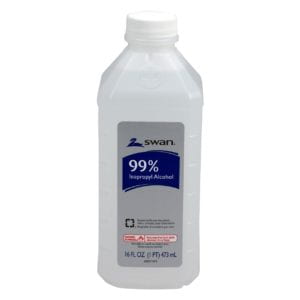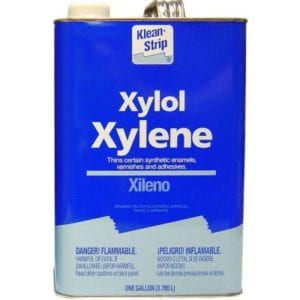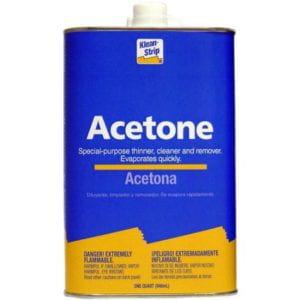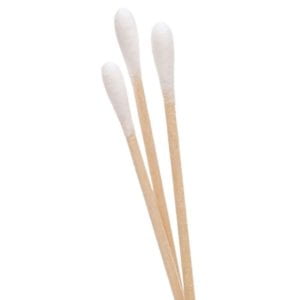Tracking Issues: Swab the Decks!
Editor's Note (2021-04-06): The following post is the first in a series of three written by Savannah Campbell on the topic of analog video deck maintenance and repair. These posts were written by Savannah in the spring of 2017 as part of an Independent Study project with media conservator/audio engineer Bill Seery and video engineer Maurice Schecter, and published on NYU's Web Publishing service under the blog title "Tracking Issues". At an unspecified point sometime after Savannah graduated later that year, NYU cut off public access to the site. Though the content was recovered (with an assist from Ben Turkus) and the blog re-published, I've offered to also host the posts here on The Patch Bay. For the whole series, also check out "Repairing a U-matic Deck" and "Repairing a VHS Deck"! Thanks, Savannah!
When encountering a video deck that is not playing back a signal properly, one of the first steps of troubleshooting problems is to examine the deck (especially the video heads) for signs of dirt and other debris. Running old tapes tapes through a deck can cause them to shed particulates onto the machine's tape path, clog the heads, and prevent the deck from being able to read subsequent tapes. Additionally, some parts of a video deck are made of rubber, which can degrade over time. Old rubber can turn into black goo that can smear throughout the deck. In other areas of the machine, glue holding mechanical parts together can melt and also wreak havoc. All sorts of goop and debris can hinder how a VTR plays back tapes, impeding a tape's journey throughout the deck or clogging the heads so the machine cannot interpret a tape's video signal.
There are many cleaning solutions and materials available for cleaning video decks. In this post, I will discuss several different kinds of cleaning supplies and their effectiveness at scrubbing various deck components clean.
Cleaning Solvents:
Isopropyl Alcohol

The mildest, gentlest cleaning solution recommended for cleaning video heads is isopropyl alcohol. Isopropyl alcohol is safe to use on almost all parts of a video deck (metal, plastic, circuit boards, etc.), which is why many in the archival profession will recommend it as the best and safest option for cleaning VTRs, especially the sensitive playback heads. It is best suited for use on machines that will be regularly cleaned and are currently used for playback/digitization. Isopropyl alcohol is good for minor clean-up tasks, such as wiping dust particles and minor debris that was left behind from a tape with sticky-shed syndrome. If using isopropyl alcohol, one should purchase a solution with as little concentration as possible. 90% isopropyl or higher is recommended.
Xylene

Moving from mildest to most severe cleaning solutions, xylene is the next-strongest solvent after isopropyl alcohol. Xylene is effective at cleaning up more pervasive remnants of gunk/debris, especially on the metal parts of the machine. Be careful about using xylene on plastic components, as it could melt them, and never use it on any rubber components at all as it will dry them out.
Acetone

The strongest solvent recommended for cleaning VTRs is acetone. Acetone is absolutely the most effective solution for removing gunk, goop, glue, and debris. Though acetone is a very powerful solvent, it can still be safely used to clean anything metal, as well as circuit boards. It is even safe to use on the video heads themselves, especially if they are particularly clogged with goop. Acetone should never be used on plastic or rubber because it is strong enough that it will melt these materials. However, for the dirtiest of the dirty decks out there that have not been opened up or cleaned in years, acetone will get the job done.
Cleaning materials:
Q-Tips

Q-Tips are great for cleaning any hard-to-reach nooks and crannies in the machine. For cleaning video decks, the Q-Tips with long handles are well-suited for the task. Though some cleaning swabs can leave fibers behind in the deck, the less-fluffy varieties of Q-Tips are a good option for deck cleaning and are less likely to shed in the machine. Q-Tips are best-suited for cleaning metal posts and hard-to-reach mechanical parts. Do not clean the video heads themselves with Q-Tips.
PEC Pads:

PEC Pad wipes are well-suited for cleaning decks, especially video heads and other easy-to-reach parts of the tape path. Anywhere the tape itself touches can be cleaned with a PEC Pad. PEC Pads are also recommended to use because the cloth does not leave any fibers/lint behind. If you use a cheaper, flimsier type of wipe (like KimTech wipes or tissues), they will shed all over the machine and create another mess to clean up. PEC pads are both sturdy and soft, and can be used safely on any part of the deck. To clean a video head, the best practice is to hold a PEC Pad doused with alcohol completely still against the drum/heads, and rotate the drum underneath it, making sure to apply sufficient pressure with the pad.
Newspaper

For audiovisual archivists or video engineers that finds themselves without PEC pads or Q-Tips, a page from the day's newspaper is a surprisingly effective option for cleaning a video deck. Newspaper is completely safe to use on the deck with any type of solvent. Ink will not get on the deck, and the paper itself will not leave any fibers behind. Newspaper is sturdy, yet gentle enough to be a reliable and affordable option for cleaning a deck. Just tear off a piece, douse it in your favorite cleaning solution, and wipe the deck clean! If print newspaper is not available, sturdy paper like from a legal pad can work in a pinch, though printer paper is not stable enough for the task (it will leave fibers behind).
For the next post in the "Tracking Issues" series, continue to "Repairing a U-Matic Deck".
Savannah Campbell (M.A. in Moving Image Archiving and Preservation from NYU, 2017), is now a Media Preservation Specialist, Video & Digital Media at the Whitney Museum of American Art in New York City. Prior to coming on board as part of the Whitney's Media Preservation Initiative, she was a Fellow in Magnetic Media Preservation at The Standby Program and worked on audiovisual projects for the Dance Heritage Coalition, CUNY TV, and Crawford Media Services.